AI-Native NOW: The New Era
Join us to discover how HPE Networking gives you the tools to simplify operations, boost performance, and secure your infrastructure from edge to core with agentic AI and industry-leading AIOps.
The Marvis® AI engine is the foundation for Mist™, Juniper’s AI-native networking platform. It uses a combination of AI, machine learning, and data science techniques to analyze and interpret data to proactively optimize user experiences and simplify operations across the wireless access, wired access, SD-WAN, WAN Edge, data center, and security domains.
Marvis AI engine ingests data from a wide range of sources, including Juniper access points (APs), switches, Session Smart Routers, WAN Edge Routers, firewalls, and third-party applications, including Zoom and Teams, for end-to-end insight into user experiences. These purpose-built devices work in concert with the Marvis AI engine to optimize user experiences from client to cloud, providing automated event correlation, root cause identification, Self-Driving Network™ operations, network assurance, proactive anomaly detection, and more.
Juniper’s Marvis AI engine provides next-generation customer support designed to simplify and optimize network operations. As the conversational interface for Marvis AI and the Mist platform, Juniper’s Marvis AI Assistant, the industry’s first AI-powered virtual team member, provides extensive insight and guidance to IT staff via a natural language conversational interface.
The Marvis AI engine saves operators time, effort, and money with up to 90% fewer trouble tickets, up to 50% faster problem resolution, and up to 85% fewer on-site visits. Users benefit from a network infrastructure that is more predictable, reliable, and measurable.
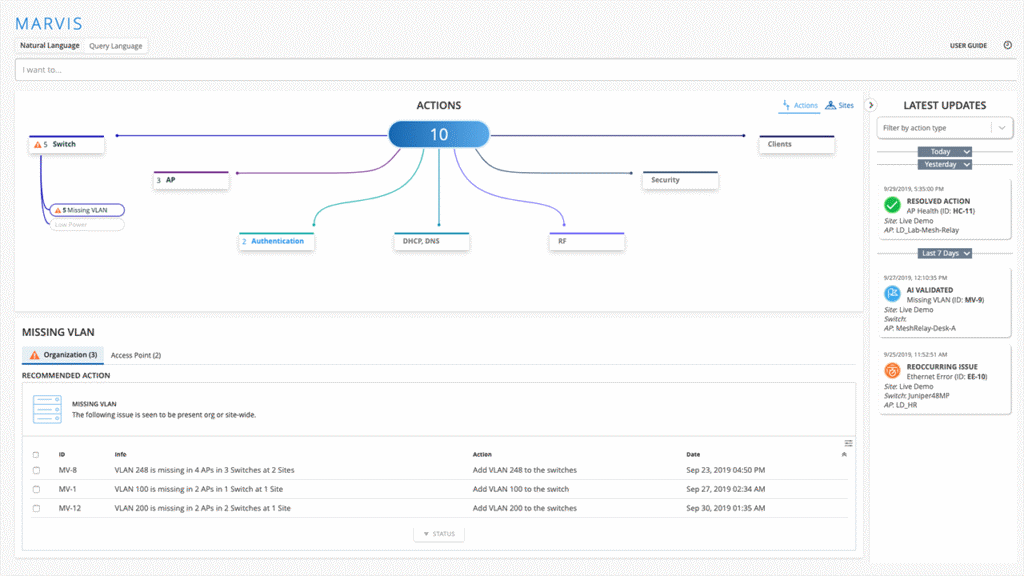
Join us to discover how HPE Networking gives you the tools to simplify operations, boost performance, and secure your infrastructure from edge to core with agentic AI and industry-leading AIOps.
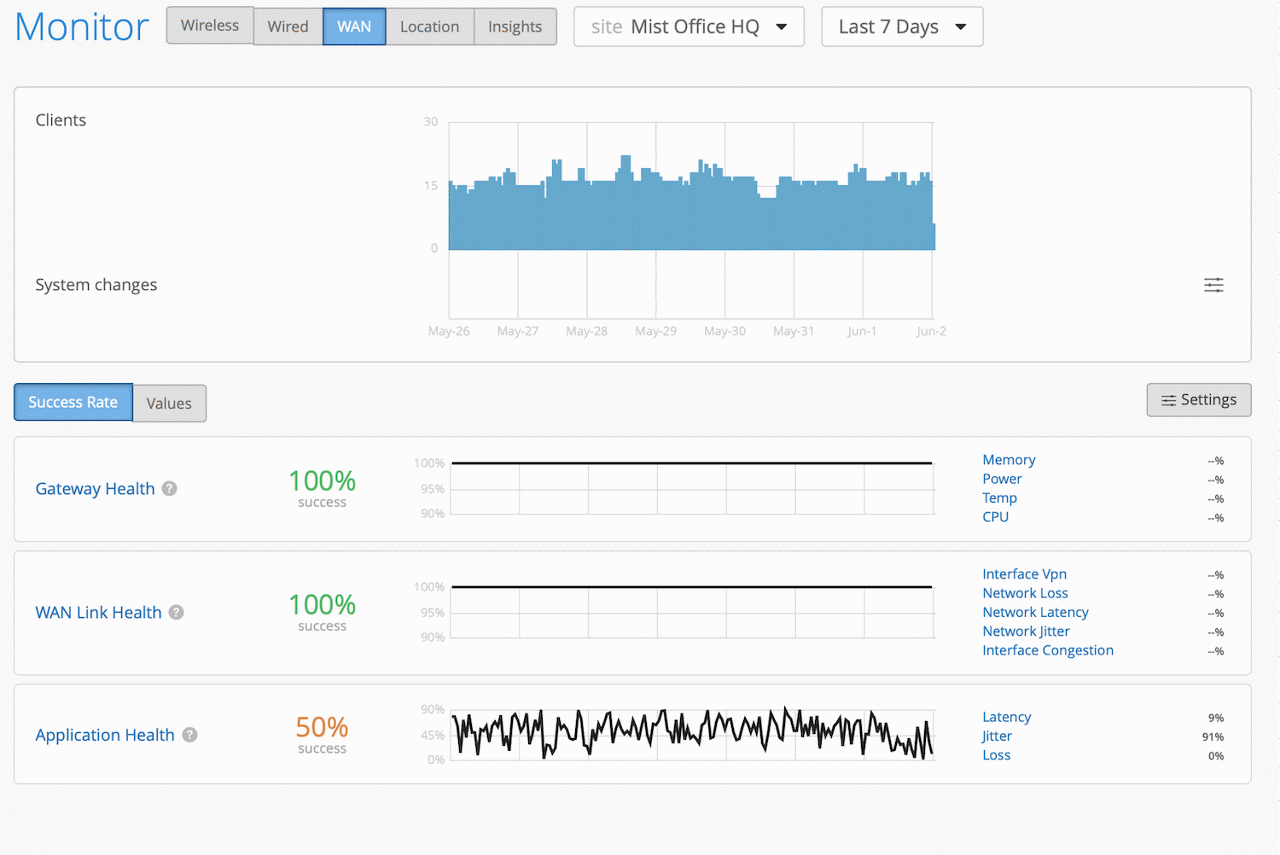
Juniper® WAN Assurance simplifies operations, improves visibility into end user experiences, and shortens SD-WAN mean time to repair.
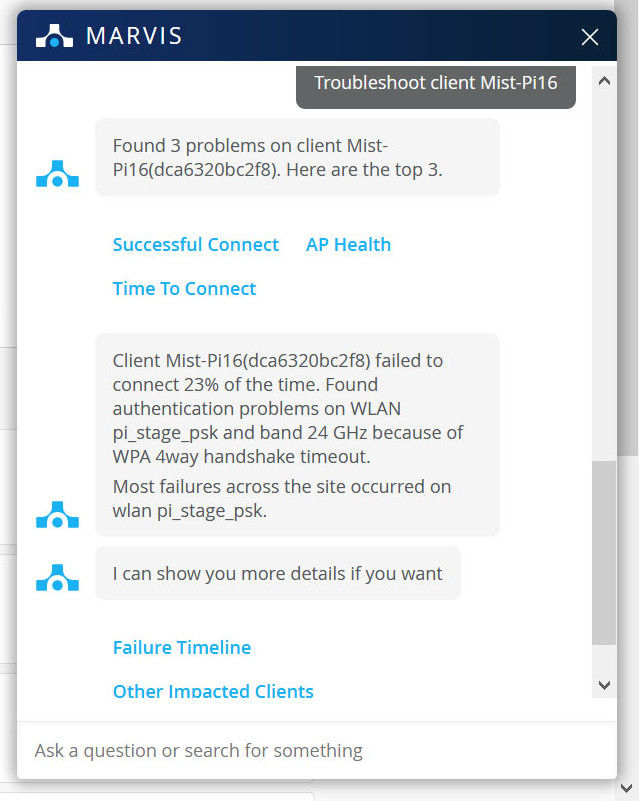
Our Marvis® AI Assistant, the first AI-native virtual network assistant, is the Marvis AI engine’s conversational interface. It optimizes user experiences with proactive actions and self-driving network operations. A natural language conversational interface provides simple and seamless interactions, making Marvis AI Assistant an integral member of any IT team.
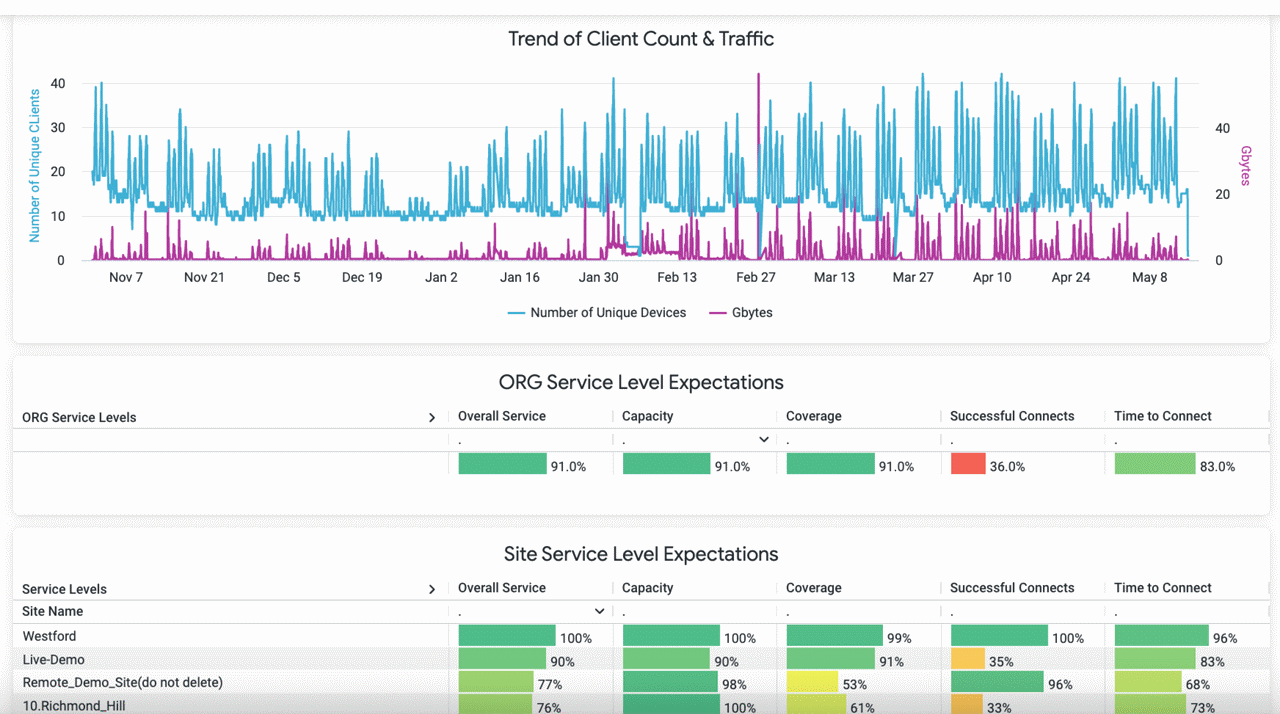
Juniper Premium Analytics is a cloud-based subscription service that offers end-to-end network observability, giving IT and line-of-business users unique network and location insights.

Marvis Minis proactively simulate user connections digitally to learn the network configuration via unsupervised machine learning and proactively highlight network issues. They work with the Mist platform to proactively simulate user connections to instantly validate network configurations and find/detect problems before they have a chance to negatively impact end user experience.
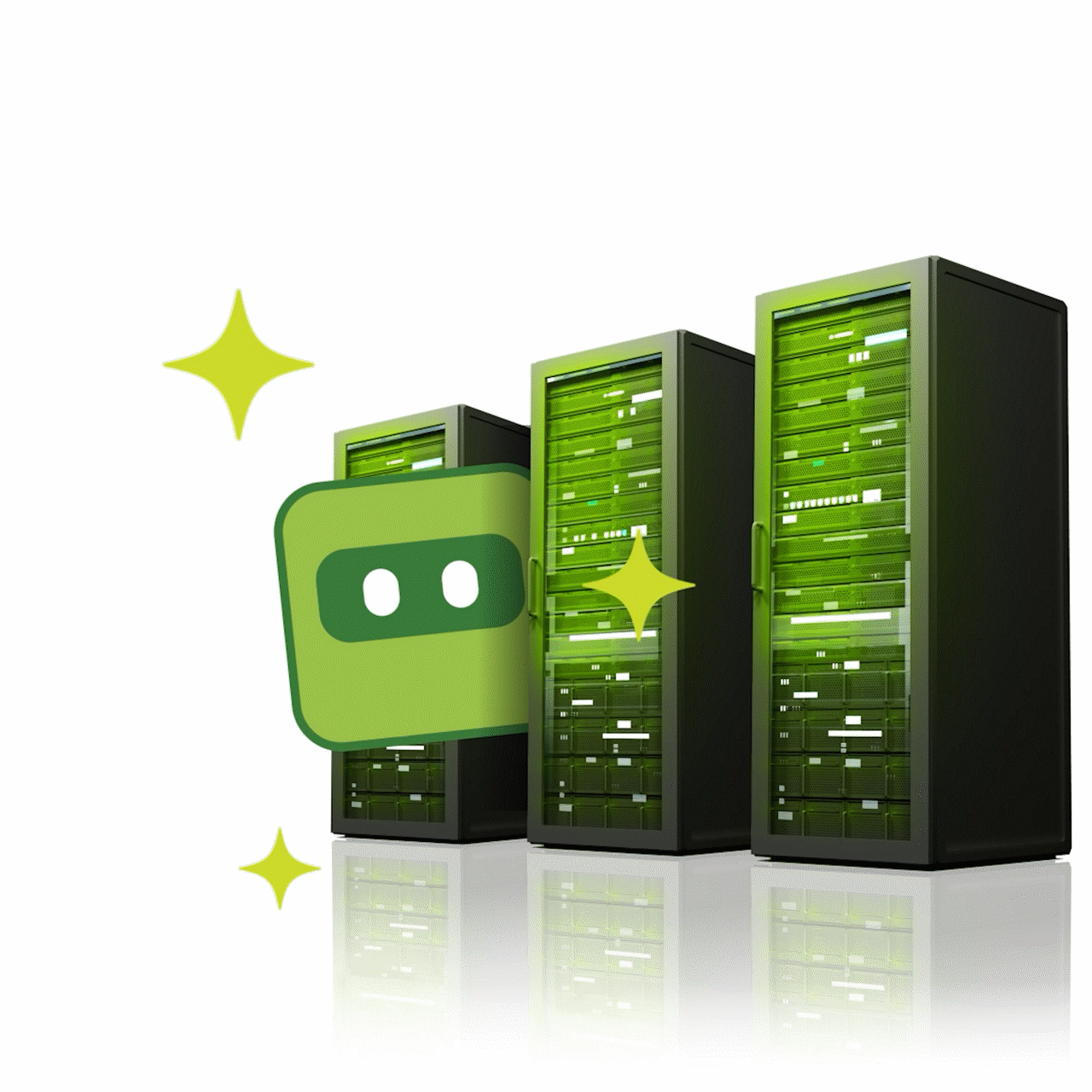
Part of Juniper Data Center Assurance, Marvis AI Assistant for Data Center combines a natural-language interface with a powerful agentic AI framework to answer urgent questions about the state of the network, recommend proactive actions, and complete tasks faster.
The Marvis AI engine, the foundation of Mist, Juniper’s AI-native networking platform, uses AI, including machine learning and data science, to optimize end user experiences, simplify operations, and provide end-to-end visibility and insights across the wireless access, wired access, SD-WAN, WAN edge, data center, and security domains.
Juniper also leverages the Marvis AI engine for next-generation customer support. The Marvis AI Assistant is the conversational interface for the Marvis AI engine, providing extensive insight and guidance to IT staff via a natural language conversational interface.
With the Marvis AI engine, customers benefit from data-driven insights and accelerated troubleshooting that allows them to deliver the best possible secured experiences at the lowest costs from client to cloud. Customers can boost user productivity with a network infrastructure that’s more predictable, reliable, and measurable while accelerating network deployments up to 9x, reducing staff time spent on networking trouble tickets by up to 90%, and reducing networking-related OpEx by up to 85%.
The Marvis AI Assistant is the networking industry’s first AI-powered virtual team member. They provide extensive insight and guidance to IT staff via a natural language conversational interface powered by the Marvis AI engine. With the Marvis AI engine, customers benefit from data-driven insights and accelerated troubleshooting that allows them to deliver the best possible end user experience.
There are many ways to get started with the Marvis AI engine. Qualifying participants can get a free Juniper access point and a 90-day trial of the Juniper Cloud service. Experience the benefits of the Marvis AI engine firsthand. Claim yours today. You can also take the Marvis AI Assistant for a test drive with the Mist™ Platform Self-Guided Tour.
At Juniper Networks, we continuously strive to align the development of our AI systems with both legal and regulatory requirements. We actively monitor and update this practice to ensure compliance with evolving laws governing data privacy, AI ethics, and security. We prioritize alignment with regional and international standards (including GDPR) and AI regulations (such as the EU AI Act, and NIST AI frameworks). Under the EU AI Act, MistAI offerings are generally classified as limited to minimal risk.
Juniper harnesses the power of best-in-class general purpose AI (GPAI) models to enhance its generative AI (GenAI) capabilities. By integrating these models into the Marvis AI Assistant conversational interface, the Marvis AI engine provides an intuitive, intelligent document search and summarization experience for users for self-service on support tickets that relate to configuration questions. This helps the Marvis AI Assistant present answers and insights from vast amounts of Juniper public documentation, reducing the time to resolution of customer questions. Data privacy and confidentiality is always top of our mind, and no customer confidential data is ever exposed to GPAI models.
Protecting our end users’ data is mission-critical to Juniper. The Marvis AI engine offers our end users the peace of mind that they are always on the latest version of our software. This enhances our ability to innovate and protect our end users’ data with evolving technology. We can respond to security threats rapidly by pushing security updates to our entire end user base and ensuring common data handling standards. Most importantly, the Marvis AI engine is colocated in tier-1 data centers with industry standard certifications. For more information on data privacy and security, refer to the “Data Processing, Privacy and Security” section in Marvis AI engine Cloud Service Description.
Juniper deletes end user data (including device data) from the Marvis AI engine cloud on a 60-day rolling basis and upon an end user’s written request. Packet data is retained and available for seven days.
With Juniper Premium Analytics, end users may authorize Juniper to retain end users’ Wi-Fi, wired, and WAN user session metadata for longer periods to display trends, analysis, and a more comprehensive view of network operations using device data and other data collected through the Marvis AI engine.
Reference applicable product documentation for further details on retention of information on Juniper devices. For more details, refer to the “AI Driven Enterprise Privacy Regime” section in the Marvis AI engine Cloud Service Description.
For our supervised, unsupervised machine learning and reinforcement learning models, Juniper collects device data. Details on the data collected can be found under the “AI Driven Enterprise Privacy Regime” in Marvis AI engine Cloud Service Description. No customer data is used to train GenAI models. The scope of usage of these models is limited to Juniper public documentation at juniper.net.
Below is a description of the data elements processed in the Juniper Marvis AI engine cloud for Juniper Wi-Fi Assurance.
• Device name
• Device type, model, family, and operating system
• MAC address
• IP address
• User agent
• Username
• Generic or specific location
• Dynamic (packet capture) (PCAP ): limited data such as header information, IP address of sender, and recipient
Below is a description of the data elements processed in the Juniper Marvis AI engine cloud for Juniper Wired Assurance.
• IP address
• MAC address
• Hostname
• Username
• Interface statistics (Tx/Rx, errors)
• Group
• LLDP information
• Dynamic PCAP: limited data such as header information and the IP addresses of the sender and the recipient
Below is a description of the data elements processed in the Juniper Marvis AI engine cloud for Juniper WAN Assurance.
• IP address
• Interface statistics (Tx/Rx, errors)
• Application information
• Summary of session records
• MAC address
• LLDP information
• Device model
• Dynamic PCAP: limited data such as header information and the IP address of the sender and the recipient
Below is a description of the data elements processed in the Juniper Marvis AI engine cloud Juniper Access Assurance.
• Device name, type, model, family, and OS
• MAC address
• IP address
• Username
• User agent
• Hostname
• Location data
• Captive portal data
• Email address
• Login
• Password
• Certificate information
• Username and/or email addresses are used by Juniper Access Assurance for authenticating when customers rely on user certificates or EAP-TTLS based authentication
Juniper secures end user data by implementing various controls, such as encryption and obfuscation, including:
• AP: Communication between the Juniper cloud and APs uses HTTPS/TLS with AES-128 encryption, and mutual authentication is provided by a combination of digital certificate and per-AP shared key created during manufacturing. A 4096-bit key is used for certificate signature
• Switches and gateways: Communication is over SSH to the Juniper Mist Cloud. With CloudX enabled on certain switch families, communication is over HTTP/TLS, over port 443, and SSH is not required
• UI or API: API communication (including UI access) uses HTTPS/TLS and is encrypted with AES-256
• Internal to cloud: Data within the cloud is stored using AES-256 encryption
• Management/infrastructure console: Accessed over HTTPS connection using a 2048-bit RSA key
Industry standard encryption is utilized for data communication across network administrators, infrastructure hardware/software, end users, and the Juniper cloud, while stored data is block encrypted.
The Marvis AI engine uses a combination of AI, machine learning, and data science techniques to optimize user experiences and simplify operations. For example, here are few techniques in Juniper’s AI data science toolbox:
To learn more about the logic behind the Marvis AI engine, see our Explainable AI (XAI) webpage.
The Marvis AI engine uses supervised, unsupervised, and reinforced machine learning. For example:
To learn more about the logic behind the Marvis AI engine, see our Explainable AI (XAI) webpage and watch these short videos on AI development and training: Bob Friday Talks: Coding Minds and Bob Friday Talks: Bytes of Brilliance, Unveiling the AI Canvas. An AI Primer.
Yes, Juniper’s AI techniques are explainable. To build trust and confidence in our AI, we provide transparency in how we leverage AI/ML tools.
To learn more about the logic behind the Marvis AI engine, see our Explainable AI (XAI) webpage.
Yes, the Marvis AI engine leverages natural language processing and understanding (NLP, NLU), large language models (LLM), and generative AI (GenAI) to power the Marvis AI Assistant.
We’ve also integrated ChatGPT with Marvis AI Assistant to deliver more human-like conversational capabilities, particularly regarding documentation and support issues.
Yes, Marvis AI engine seamlessly integrates with third-party tools with 100% open APIs. Key integration partners include ServiceNow, Zoom, Microsoft Teams, Cradlepoint, and Zebra.
To learn more, see our blog post: End-to-End Assurance: Building an Ecosystem to Transform the Campus & Branch.